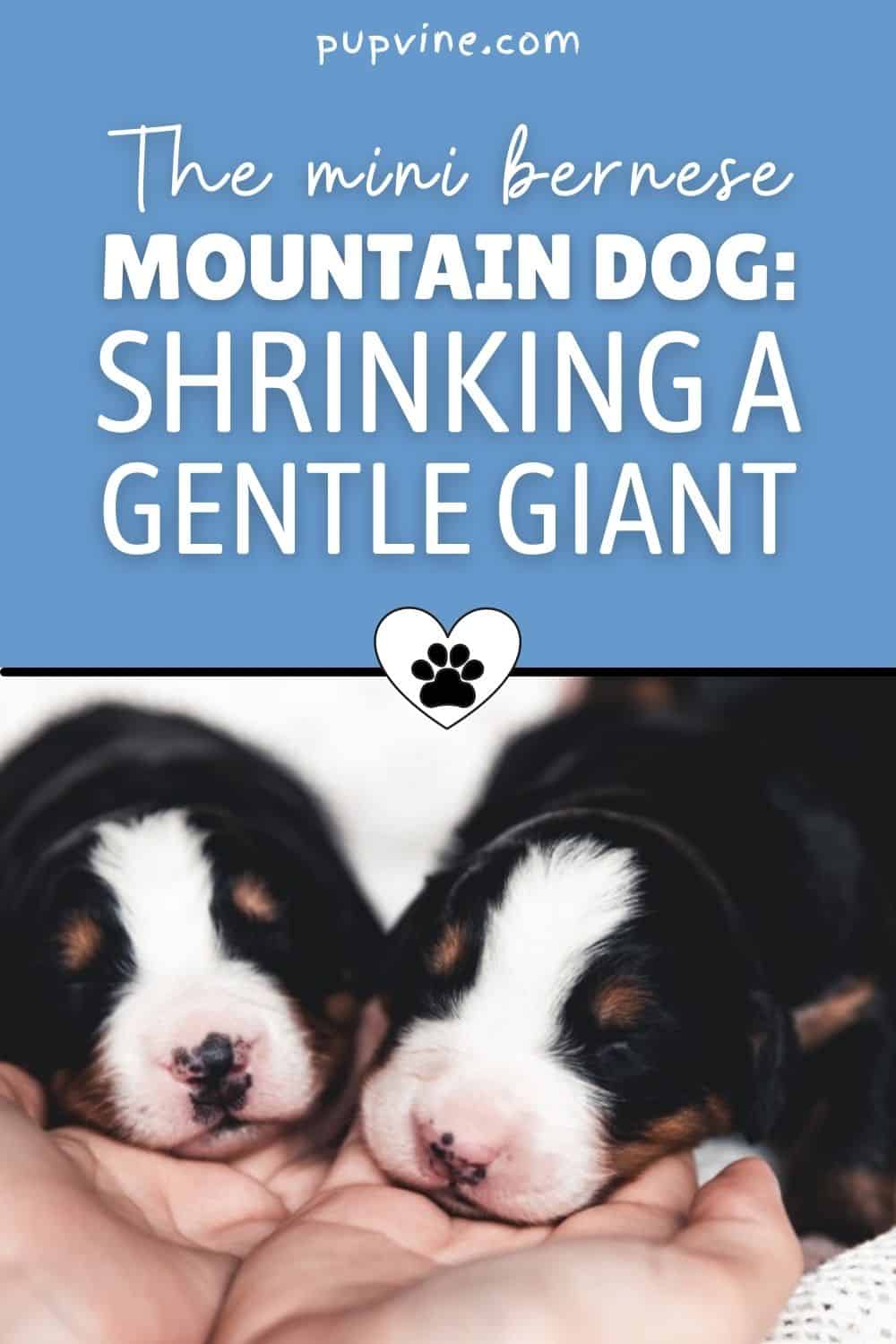They’re famous for being affectionate and friendly and their beautiful tri-color coat, but most of all for their enormous size.
The Bernese Mountain Dog is a very large breed, standing at around 70 cm (27 inches) at the shoulder in some cases and weighing in at about 34–54 kg (74–119 lbs).
This fact alone is enough to put people off owning one of these lovable giants.
You need space to keep them, even more space for them to exercise, and plenty of money to spend on the vast amount of food they will consume.
This working-dog breed has been around in some form for a couple of thousand years when the Romans brought their ancestors with them over the Alps to Switzerland.
They became firmly established there, used for hauling heavy carts, herding cattle over long distances, guarding farms, and providing companionship to the farmers and families living in remote areas.
Their size was an essential part of their usefulness!
It wasn’t until the early 1900s that they became known in America and accepted as a registered breed by the American Kennel Club.
This move helped boost their popularity as people fell in love with these gentle giants, getting them as guard dogs, family pets, and farm dogs.
Although still popular as a family dog these days, particularly so in German-speaking countries, Berners are just too big for some people to handle.
This is why the miniature Bernese Mountain Dog has proved to be such a hit amongst dog lovers, as all the adorable qualities of a full-sized Berner have been packed into a much smaller, more manageable frame!
How Do You Make A Mini Bernese Mountain Dog?

The easiest way is to find a smaller, similar-looking purebred dog and create a crossbreed, which is precisely what breeders have done.
The Cavalier King Charles Spaniel has similar coloring to the Bernese Mountain Dog, making it the ideal choice.
The result is a dog that looks and acts like a Berner but is a fraction of the size.
Some breeders also use miniature Poodles or Toy Poodles, creating the ever-popular Mini Bernedoodle.
As cute and fluffy as they are, they don’t strictly qualify as Mini Bernese Mountain Dogs.
This is something to keep in mind when approaching a breeder if you are set on getting a particular breed of dog.
In extremely rare cases, dwarfism can result in mini versions of a dog breed.
Dwarfism is a natural, genetic condition that carries a significantly increased risk of major health problems.
Any responsible, ethical, and reputable breeder would not consider using a dog with dwarfism in their breeding program.
This condition is not known to affect Berners and is found mostly in other breeds (the German Shepherd in particular), and there are very few cases where dogs with dwarfism have been sold as mini Bernese Mountain Dogs.
Still, always make sure you’re buying from reputable Bernese Mountain Dog breeders.
Finding only quality products for your lovely little giants is a tough task. Luckily, we’ve come up with a list of premium dog products for mini Bernese Mountain dogs.
| Food: Nutro Natural Choice Recipe | Check Price |
| Bed: Frisco Plush Bolster Bed | Check Price |
| Brush: FURminator Deshedding Tool | Check Price |
| Collar: Frisco American Flag Collar | Check Price |
| Harness: Best Pet Voyager Harness | Check Price |
| Leash: Chai’s Choice Premium Leash | Check Price |
What Do Mini Berners Look Like?

It is difficult to say for certain, as ‘true’ miniature Bernese Mountain Dogs don’t yet exist as a recognized breed.
However, those that result from crossbreeding between the full-sized Berner and the Cavalier King Charles Spaniel will probably be the closest fit, and this is generally accepted as the right mix.
Here are a few facts and figures to let you know what to expect:
• Coat – They will bear the distinctive black, brown, and white coat, with variations in the distribution of the markings.
This is a long-haired breed that will take some looking after, so be prepared for regular brushing.
• Size – Between 43 and 56 cm (17 to 22 inches) at the shoulder when fully grown, so not anywhere near as intimidating as the mighty Berner.
• Weight – Between 16 and 29.5 kg (35 to 65 lbs), which is about half the size of their Berner parent!
If you choose a Mini Bernedoodle instead, you will probably find that the coat is completely different, being curly or wavy (As with all Doodles).
The benefit of this is that it is likely to be hypoallergenic, a trait it inherits from the Poodle genes, which might be a better choice for allergy sufferers.
What About Their Temperament?
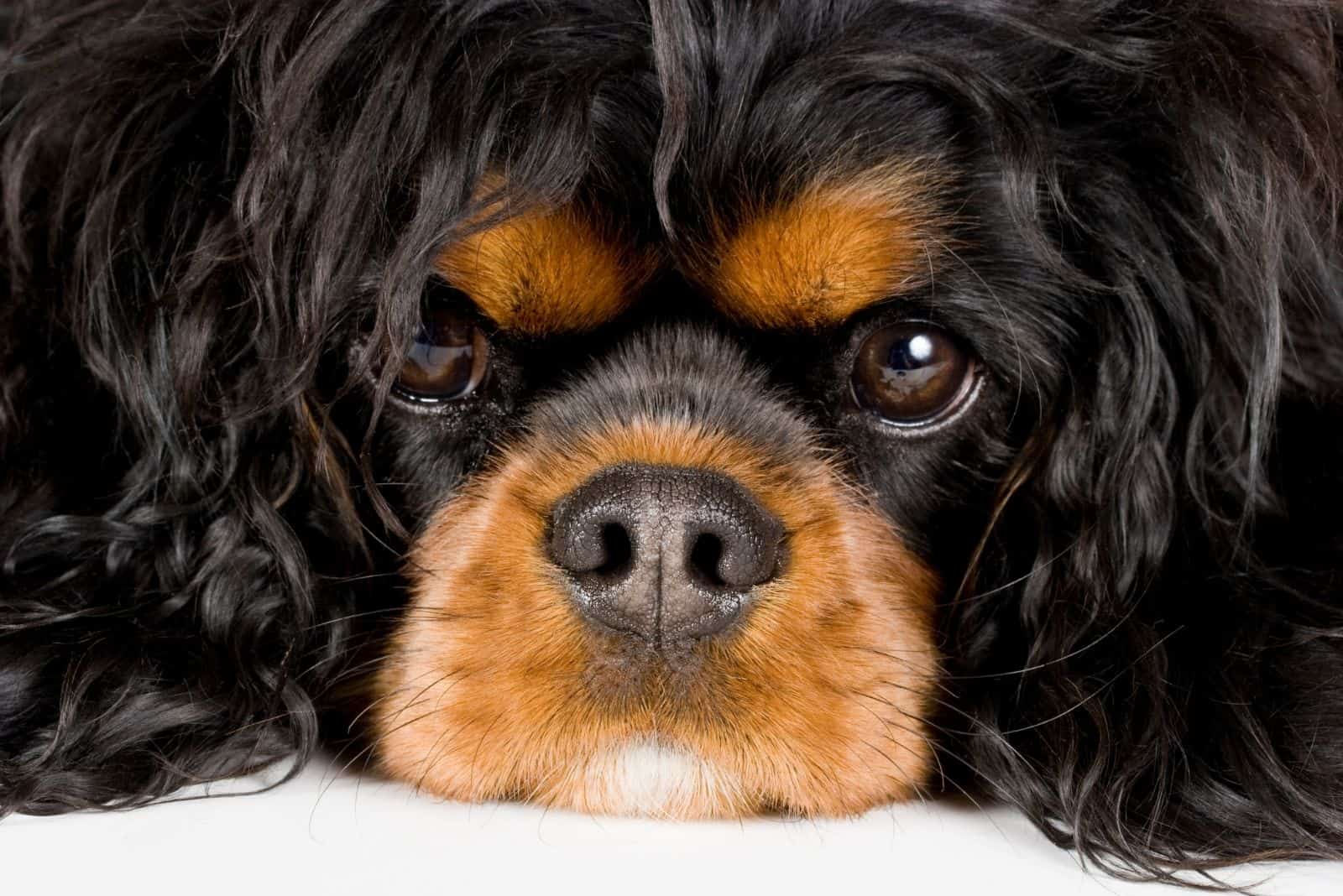
If you’re looking for an intelligent, affectionate, loyal, and confident pooch, then this could be the choice for you.
They love spending time with their family and don’t like being left alone.
They will shower you with affection but may be wary of strangers for a while until they get used to them, after which they’ll welcome them enthusiastically.
They are gentle, especially with children, making them a great choice as family dogs.
Their high intelligence makes them alert and easy to train, and the earlier you start this, the better the results will be.
This could make life easier when they are older as they have a high prey drive* and will chase that squirrel in the park or the neighbor’s cat unless you teach them to keep that urge under control!
This will also help them to interact well with other family pets.
*Opinions vary as to their prey drive, but the general view is that it is pretty high.
Some people regard purebred Bernese Mountain Dogs as having a low prey drive, but this seems unlikely as they have been bred for alertness, intelligence, and protection.
When coupled with the Cavalier King Charles Spaniel, a lapdog with an instinct to chase anything that moves (even cars!), there’s a strong possibility that the offspring will inherit these traits.
Do They Have Bags Of Energy?
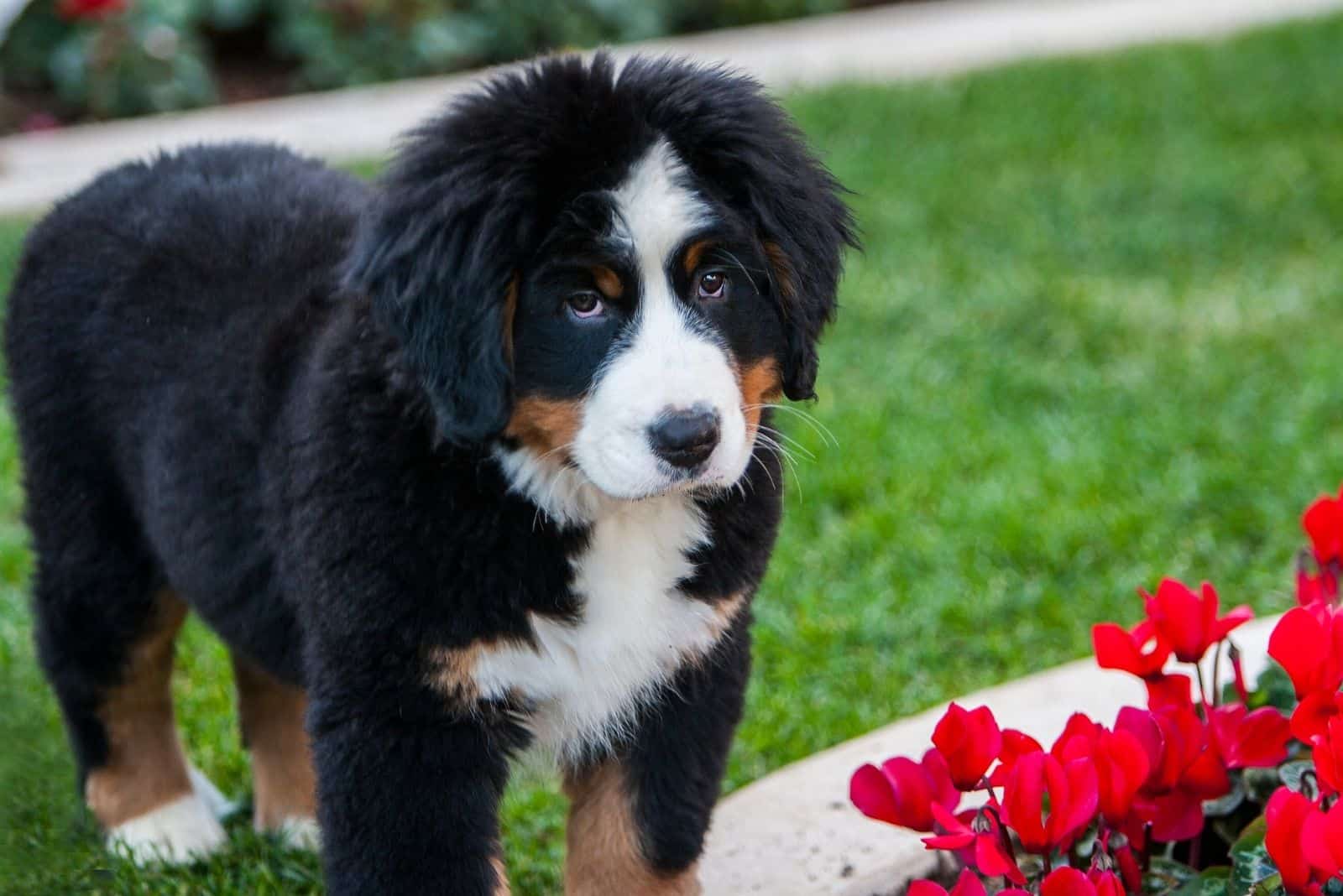
Not quite as much as the full-sized Berner, but they still have plenty to spare. They are exceptionally playful and love a good run around.
You’ll need to set aside at least one hour a day to meet their exercise needs.
This is a good chance to strengthen that bond with your furry pal, as well as ensuring that they stay fit and healthy.
Early training, combined with their relaxed nature, will make playtime safe and fun for kids to join in as these dogs tend to know the boundaries when it comes to how rough they can play.
A good game of fetch or a chase around the park will soon use up that energy, after which they’ll be happy to head home for a snooze by your feet.
Do They Need A Lot Of Grooming?
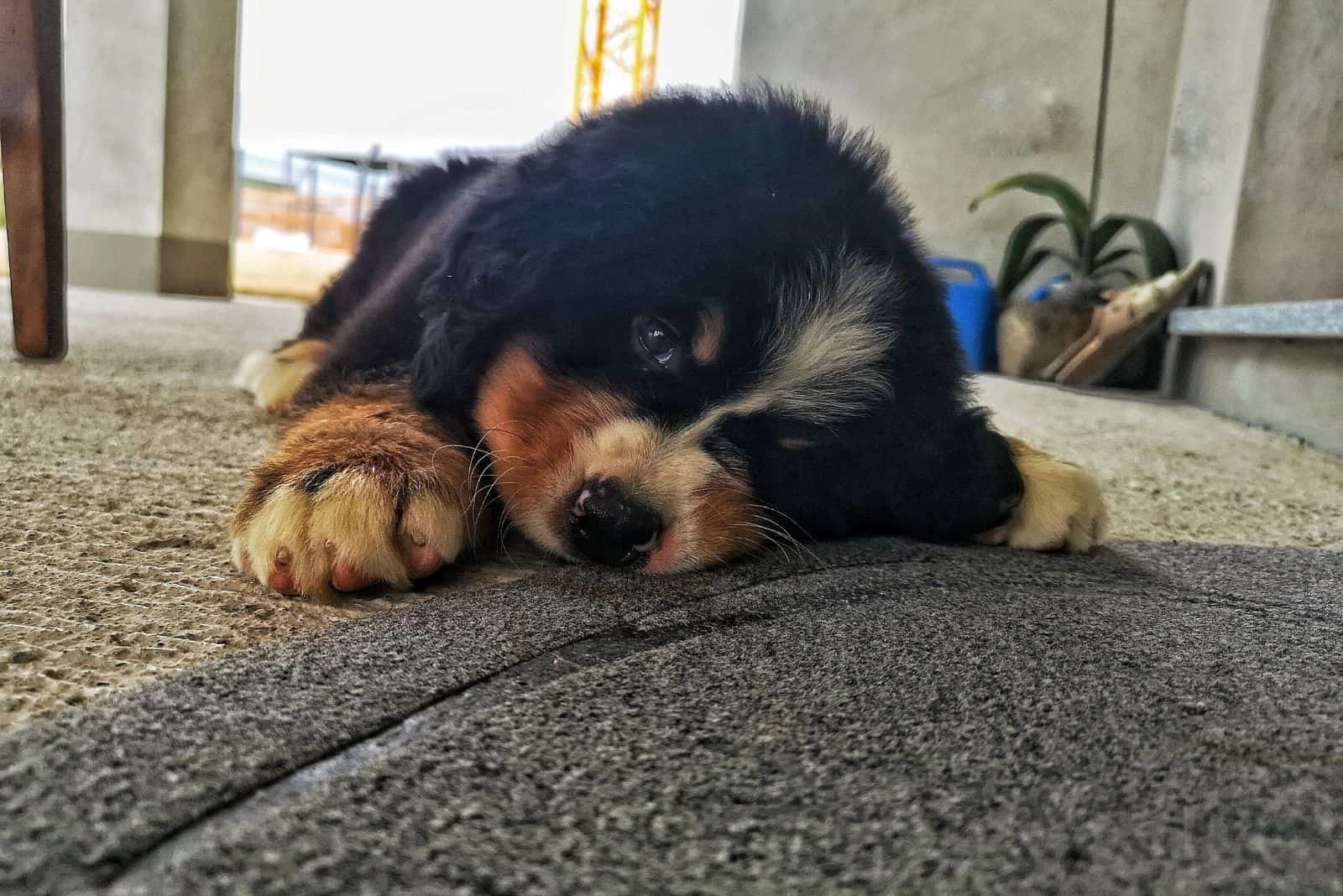
As mentioned above, they usually have a long-haired double-coat. This means that they have a long outer coat with a dense, furry, short-haired undercoat.
This shorter coat sheds (or ‘blows’) twice a year, leaving fur all over.
The entire undercoat sheds seasonally in spring and fall, which can be a real pain.
Allergy sufferers can be affected by this fur, making these times particularly unpleasant.
This is why some people choose the Mini Bernedoodle instead, as they are regarded as being hypoallergenic.
Most allergic reactions to dogs are connected to dander (tiny flakes of dry skin) and proteins in dog saliva found on the hair or fur.
Poodles have a single coat that doesn’t shed anywhere near as much as the double-coated Berner.
They aren’t prone to dander either, which is why they have earned such a glowing reputation amongst allergy sufferers.
Returning to the mini Berner’s coat, you will need to give this a good brushing at least once a week to get those dead hairs out.
And when it comes to shedding season, you’ll need to increase that to a daily brush unless you want those hairs deposited everywhere in your home.
Even so, you might find yourself vacuuming more frequently.
Another essential part of grooming is the task of bathing your dog.
Take care that you don’t do this too often, as it can wash out the natural oils that keep the coat in good condition.
You should be looking to give them a good wash no more than once a week.
Use a good quality brand of shampoo, then dry them thoroughly (doggie dryers are available to help you with this task if necessary!).
Of course, professional groomers can do the task for you if you’d prefer and if your budget allows.
You should also definitely consider brushing your dog’s teeth.
While this might not seem essential, plaque build-up can lead to some serious health risks in dogs, as well as causing them to suffer from bad breath.
A couple of good brushes twice a week and an annual visit to the veterinarian to have them checked will go a long way to keeping your dog healthy.
Finally, remember to check their eyes, ears, and toenails. Eyes and ears are common places for infections to start, so keep them clean.
If claws aren’t worn down through exercise, they can become too long, resulting in painful paws and spinal posture issues.
Do They Have Any Health Problems?
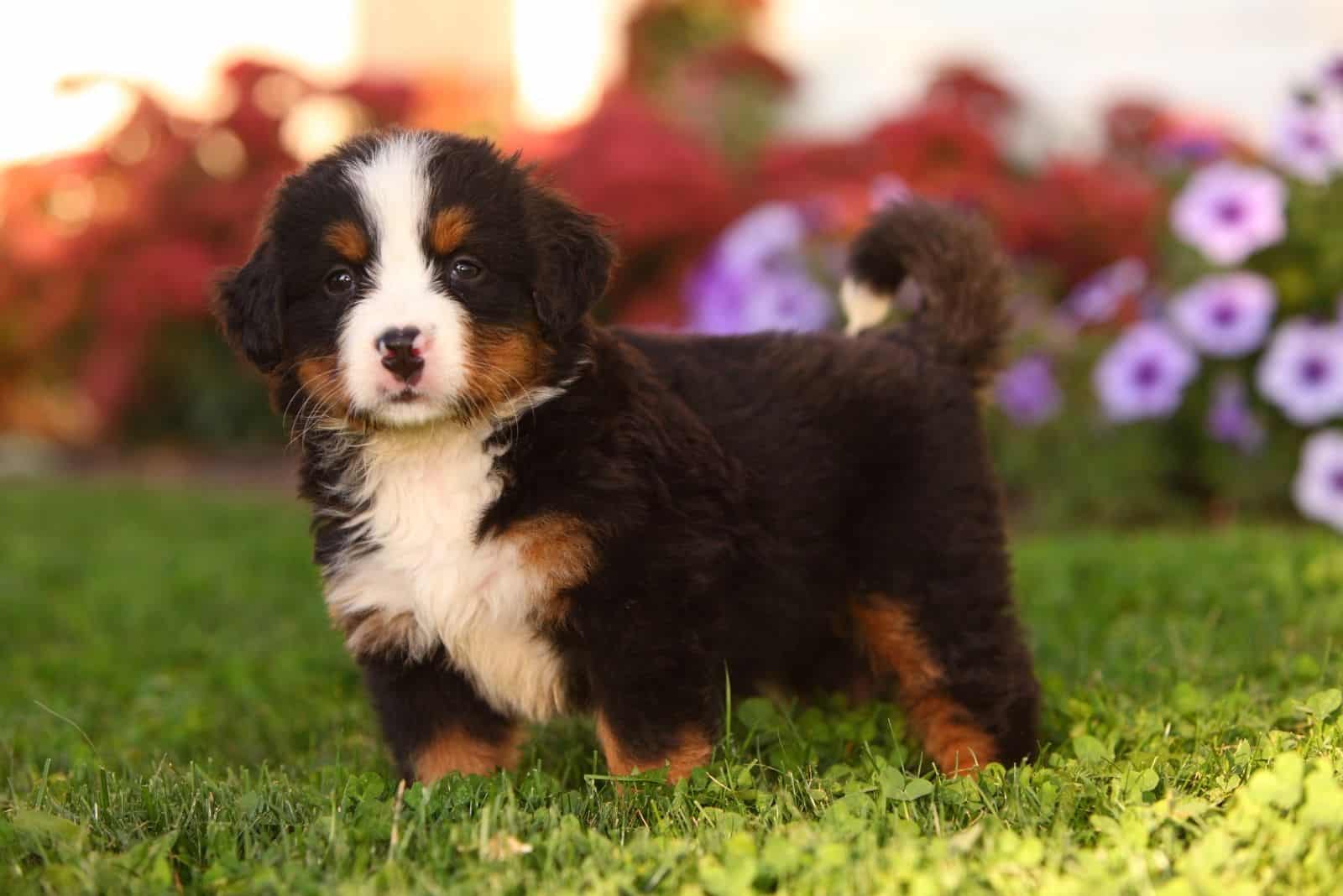
As with any crossbred dog, they can inherit health issues from either or both parent breeds.
Responsible breeders try hard to reduce the possibility of this happening, but it isn’t an exact science.
Many breeders will offer a health guarantee (covered by state law), so be sure to check out the terms before agreeing to anything.
Here’s a list of some of the more common problems facing Mini Berners:
• Mitral valve disease – the mitral valve is one of the four valves controlling blood flow through the heart. This disease causes the valve to become thickened and unable to close properly.
This allows blood to leak through, causing a heart murmur. The heart has to work harder, resulting in other health conditions as the disease progresses.
• Hip dysplasia – a very common but painful condition where the hip joint doesn’t form properly. This can lead to arthritis in later life and may require surgery to fix the problem.
• Elbow dysplasia – similar to the hip problem but sometimes more problematic as it involves a more complex joint. Diagnosis and treatment (often involving surgery in young dogs) can be costly.
• Patellar luxation – another condition affecting the legs. This is when the patella (kneecap) extends out of its groove, which stops the dog from flexing the leg completely.
You may notice your dog hopping momentarily or dragging the leg. It isn’t usually painful to start with but can lead to osteoarthritis when they are older.
• Syringomyelia – a very serious disorder that requires immediate attention. This is when the dog’s skull is too small to contain the brain, causing a blockage that restricts the flow of spinal fluid.
Pockets of this fluid, called syrinxes, are formed on the spinal cord, causing severe pain across the neck, head, and chest that will be sensitive to the touch.
Weakness and even paralysis are common symptoms.
Remember, these are possible conditions, and there is no reason why your dog shouldn’t live a healthy life and avoid them all, especially if you give them the love, care, and attention they need.
The average lifespan of a mini Bernese Mountain Dog is between 7 and 10 years, which is unusual for a smaller breed, possibly due to some of the health issues mentioned above.
However, by providing a good quality diet, plenty of exercise, and regular trips to the vet for a health check, you can catch these problems early, giving your dog the best chance of a long and healthy life.
Some Final Thoughts
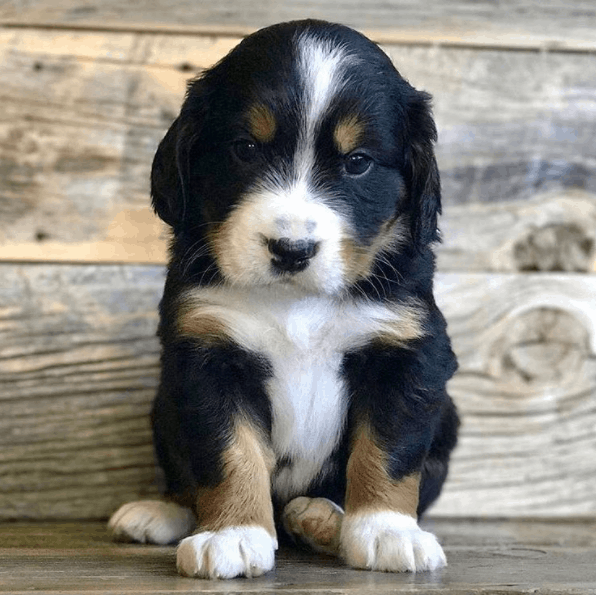
Photo from: @heidi.bernedoodle
Whether you opt for a mini bernedoodle puppy or a ‘real’ miniature Bernese Mountain Dog puppy, you’ll have all the wonderful character traits of the Berner in a small package.
These are good-natured watchdogs that won’t bark unless they really have to.
They will come to you for cuddles, and they will be happy to curl up at your feet or even on your lap – a feat that would be almost impossible with a full-sized Berner!
In terms of trainability, you won’t have to work hard, although training should start as soon as possible to iron out any urges to chase.
They are intelligent pooches, eager to please you, and willing to learn.
Make sure you give them the exercise they need, and they’ll be happy. If you have a local dog park, then make the most of it!
The miniature Bernese Mountain Dog loves to run and play, and it enjoys it even more when you or other buddies join in.
Keep them groomed well, which shouldn’t take too much of your time, and make sure they stay clean. Do all this, and you’ll have a faithful friend for life.
Make sure to check their price, as well, as the cost of miniature dogs can vary from the average Bernese Mountain Dog price.
Read Next:
• Mini Chow Chow — The Miniature Teddy Bear Dog
• Bernese Mountain Dog Golden Retriever Mix – A Friendly Giant
• Bernese Mountain Dog Husky Mix: How Good Is Bernsky?
